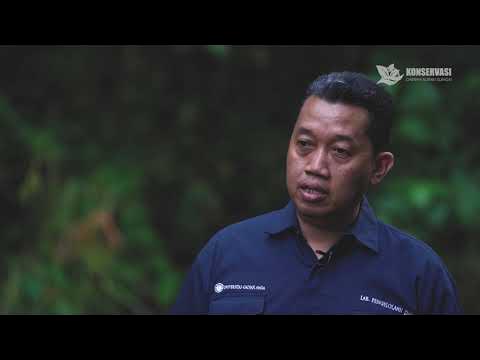Daerah Aliran Sungai atau DAS itu apa sih?
Summary
TLDRThe video discusses the importance of river basin areas (DAS), highlighting their role in water storage, erosion prevention, and flood management. It emphasizes how human activities affect these ecosystems and the need for proper management to prevent floods, landslides, and water scarcity. The script outlines different zones in a river basin: the upper, middle, and lower parts, with each having distinct functions. It also shares ongoing efforts to restore forest cover, prevent erosion, and engage communities in sustainable practices, urging everyone to contribute to maintaining clean and healthy water sources.
Takeaways
- 🌊 The term 'river basin' refers to a region surrounded by vegetation, hills, or mountains, which functions like a large bowl collecting rainwater.
- 🌱 Trees in river basins absorb water and store it underground, releasing it as groundwater, springs, or rivers.
- 🌧️ Deforestation or poor vegetation leads to soil erosion, making rivers shallow, which increases the risk of floods during heavy rains.
- 🏞️ Human activities significantly affect river basins, making proper management essential to avoid floods, landslides, droughts, and water shortages.
- 🛠️ A river basin is divided into three parts: the upper basin stores water, the middle basin is a transition area, and the lower basin is used for human settlements and infrastructure.
- 🌳 Forest conservation in the upper basin is critical, including reforestation efforts to prevent erosion and ensure water retention.
- 🌍 Efforts in Central Java include planting millions of trees and implementing erosion control measures like building erosion barriers to protect river basins.
- 🏡 Even in areas with many homes near rivers, erosion prevention efforts like reforestation and soil retention structures are essential.
- 👨🌾 Everyone can contribute by planting trees and maintaining them, especially in areas prone to erosion.
- 💧 Only 2.5% of Earth's water is freshwater, highlighting the importance of preserving river basins for clean water supplies.
Q & A
What is a watershed (DAS) according to the script?
-A watershed, or Daerah Aliran Sungai (DAS), is an area surrounded by hills or mountains that collects and channels water into a river. It acts like a giant basin where rainwater is stored, filtered by trees, and eventually becomes groundwater or surface water, such as springs or rivers.
How do trees in a watershed contribute to water storage?
-Trees in a watershed absorb water and store it deep within the soil. This process helps maintain groundwater levels and prevents excessive runoff, contributing to a sustainable water supply over time.
What happens when the watershed lacks trees or vegetation?
-Without trees or vegetation, the soil in the watershed becomes loose and unprotected. Rainwater washes away the topsoil, causing erosion and sediment buildup in rivers, making them shallow. This can lead to flooding during heavy rains.
What are the three parts of a watershed, and what are their functions?
-A watershed is divided into three parts: the upper area (hulu), which stores water; the middle area (tengah), which acts as a transition zone; and the lower area (hilir), where human activities like building homes and factories are allowed, but water and land must be used carefully.
How does human activity impact watersheds?
-Human activities, such as deforestation, construction, and improper land use, can disrupt the natural balance of watersheds, leading to problems like flooding, erosion, droughts, and depletion of clean water sources.
What measures are being taken to restore and protect watersheds?
-Efforts to restore watersheds include planting millions of trees, establishing seedling nurseries, and creating structures like dams and terraces to prevent soil erosion. In regions like Central Java, these actions are part of broader conservation initiatives.
What role do erosion control structures, like dam penahan and pengendali jurang, play in watershed management?
-Erosion control structures, such as dam penahan (retaining dams) and pengendali jurang (gully control structures), are built to stabilize the soil and prevent erosion, which can otherwise cause rivers to become shallower and lead to flooding.
Why is planting trees considered an important part of watershed management?
-Planting trees is crucial because they help bind the soil, reduce erosion, and enhance water absorption. Trees also act as natural filters, storing and gradually releasing water into the ecosystem, which supports the overall health of the watershed.
What challenges are involved in managing a watershed sustainably?
-One of the main challenges is maintaining the trees and vegetation after planting. While planting trees is relatively easy, ensuring they grow to full size and continue to provide ecosystem benefits requires consistent effort and long-term management.
Why is it important to preserve watersheds for clean water supply?
-Watersheds are vital for preserving fresh water, which makes up only 2.5% of Earth's water. By maintaining healthy watersheds, we ensure a continuous supply of clean water for drinking, agriculture, and other needs, preventing water shortages.
Outlines

This section is available to paid users only. Please upgrade to access this part.
Upgrade NowMindmap

This section is available to paid users only. Please upgrade to access this part.
Upgrade NowKeywords

This section is available to paid users only. Please upgrade to access this part.
Upgrade NowHighlights

This section is available to paid users only. Please upgrade to access this part.
Upgrade NowTranscripts

This section is available to paid users only. Please upgrade to access this part.
Upgrade NowBrowse More Related Video
5.0 / 5 (0 votes)





